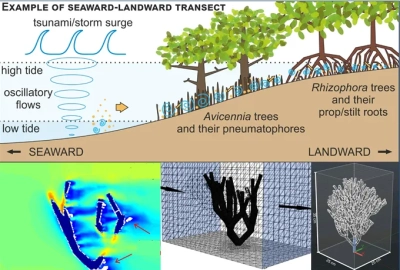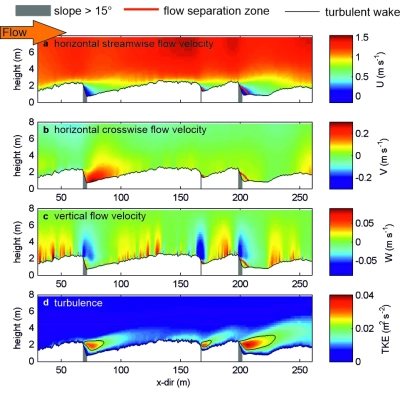- Home
- Our Methods
- Modelling
- Sediment transport and hydrodynamic modelling
Sediment transport and hydrodynamic modelling


Sediment transport and hydrodynamic modelling
A wide range – from large-scale ocean circulation to small-scale ocean currents, is responsible for the distribution and redistribution of natural sediments, particulate matter, as well as anthropogenically introduced materials in our oceans. Nonetheless, natural sediment dynamics, and thus the structure of our seabed, are increasingly influenced by human activities. Therefore, a better understanding of the fluid dynamics, associated transport processes, and the resulting morphologies is crucial for the protection of our seas and the development of sustainable usage concepts.
Today, advanced computer simulations enable us to model complex flow conditions, transport processes, and morphological developments over a wide range of spatial and temporal scales. These high-resolution simulations provide insights into flow patterns, particle dynamics, as well as diverse interactions between ocean currents and material transport. In addition, our models provide valuable insights into the distribution patterns of pollutants within the oceans. This is particularly important within fragile marine ecosystems, such as coral reefs and mangrove forests, for assessing environmental impacts and developing protection strategies to preserve ocean biodiversity.
The simulation techniques employed are highly diverse and tailored to a specific research question. In the field of fluid dynamics, we use a bread spectrum of methods, including Computational Fluid Dynamics (CFD) with OpenFOAM, Delft3D, and other tools, to simulate the movement of water masses, the transport of sediments, and particulate matter in marine systems.


